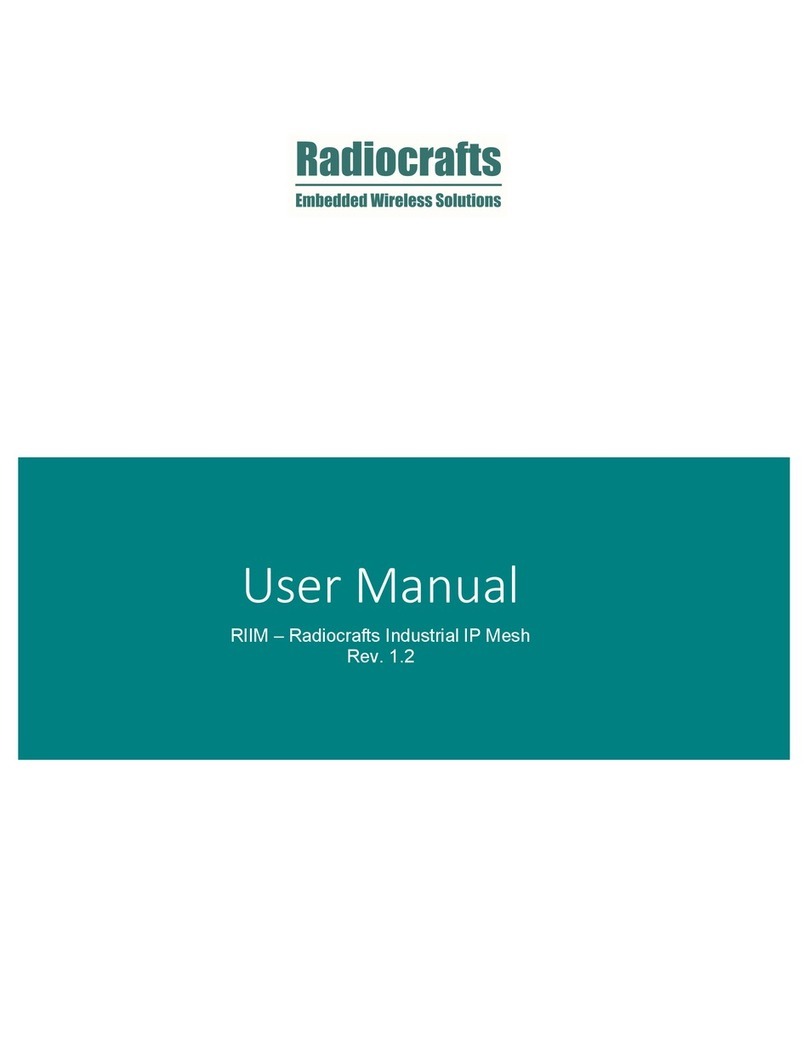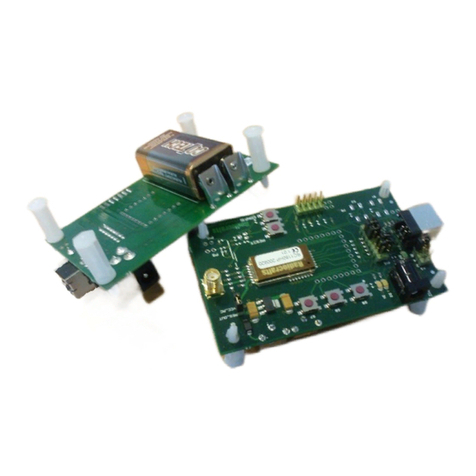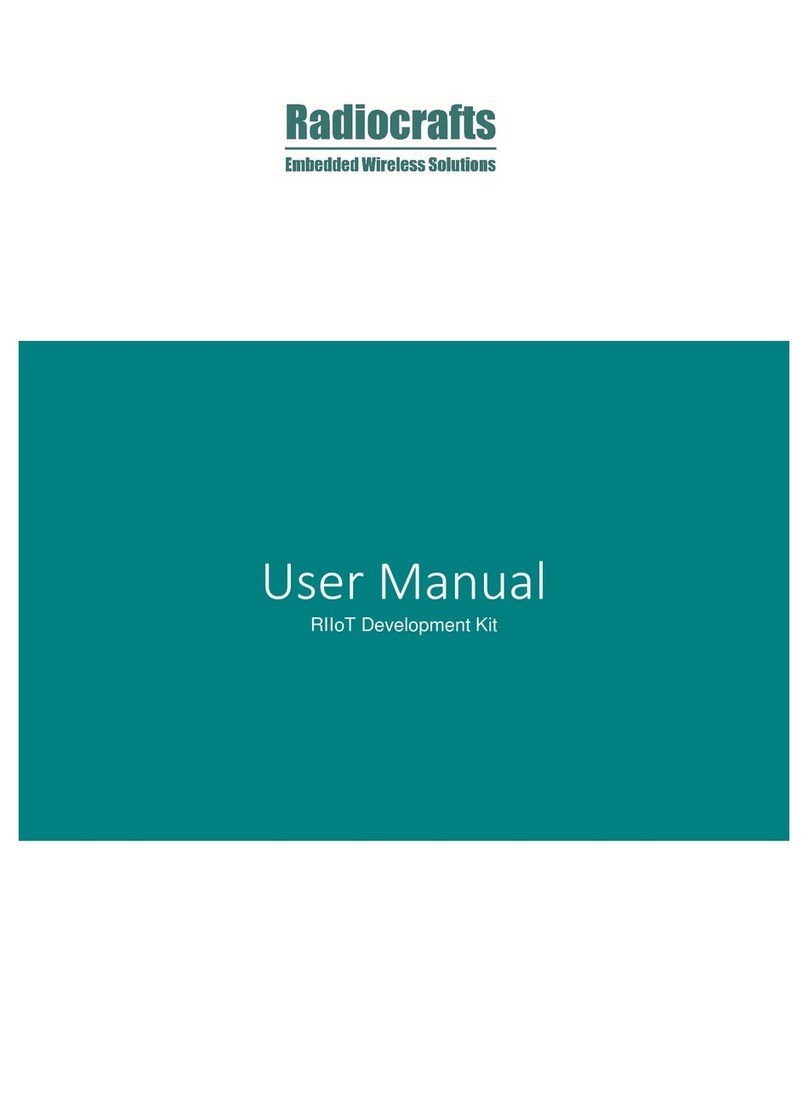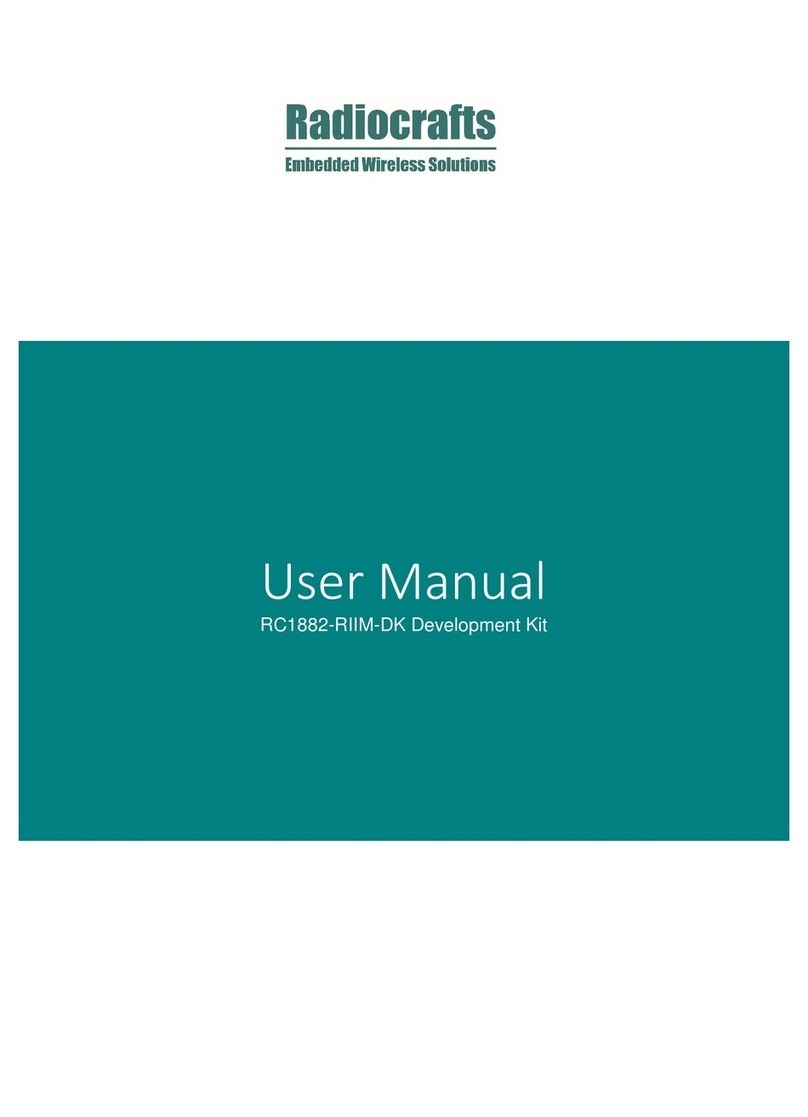RC1xxx-xSM-DK
Sensor module Development Kit User Manual
Table of contents
TABLE OF CONTENTS............................................................................................................ 1
DEVELOPMENT KIT INTRODUCTION.................................................................................... 3
SIGFOX KIT .............................................................................................................................. 3
MBUS KIT ................................................................................................................................. 4
MSM QUICK START................................................................................................................. 5
SSM QUICK START ................................................................................................................. 6
SENSOR BOARD INTRODUCTION......................................................................................... 7
BLOCK DIAGRAM SENSOR BOARD..................................................................................... 8
POWERING THE SENSOR BOARD........................................................................................ 9
CONTROLLING AND CONFIGURING SENSOR BOARD...................................................... 9
I/O CONNECTION................................................................................................................... 10
I/O SILKSCREEN.................................................................................................................... 11
SHT35 TEMPERATURE AND HUMIDITY SENSOR ............................................................. 12
HDC2010 LOW POWER TEMPERATURE AND HUMIDITY SENSOR................................. 12
BME680 ENVIRONMENTAL SENSOR.................................................................................. 12
ALS-PT-315C, ANALOGUE LIGHT SENSOR....................................................................... 12
SL353LT HALL DETECTOR .................................................................................................. 13
LIS3DE ACCELEROMETER .................................................................................................. 13
BLUE LED............................................................................................................................... 13
PROTOTYPING WITH THE SENSOR BOARD ..................................................................... 14
SENSOR BOARD PCB AND ASSEMBLY LAYOUT............................................................. 15
PROGRAMMING/DEBUG CONNECTOR.............................................................................. 15
SENSOR BOARD CIRCUIT DIAGRAM ................................................................................. 15
SENSOR BOARD BILL OF MATERIALS.............................................................................. 18
REFERENCES ........................................................................................................................ 20
DOCUMENT REVISION HISTORY......................................................................................... 20






























